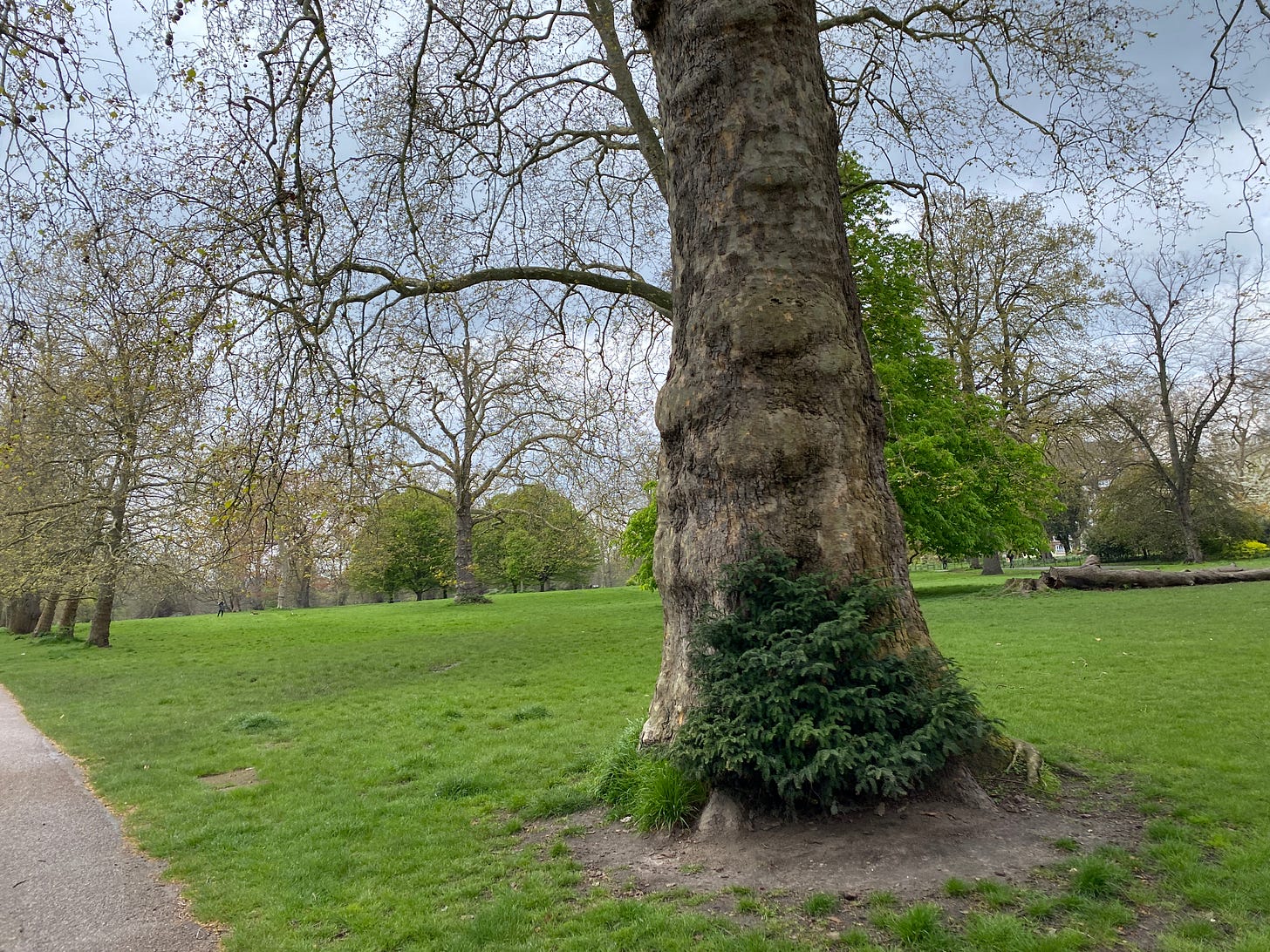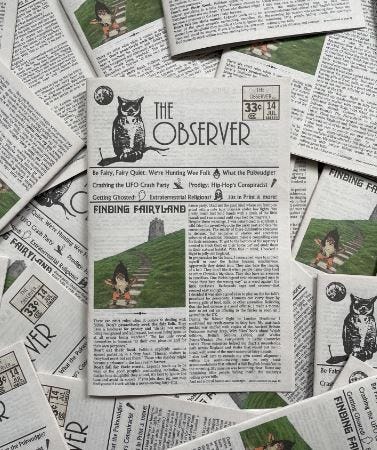Read Part 1 Here: Where we get the travel bug and decide to scour a foreign country for an imaginary creature.
London
First stop—the big city. I didn’t expect to find many fairies in London, but I figured that its endless supply of dusty bookshops would give me insights about where to focus my efforts. I needed to obtain some of Fairyland’s primary sources—books published centuries ago that document the finer points of the UK’s fairy mythology. I also suspected that the city might somehow be a draw for the merry little pranksters. Amid the bustling city streets, they could effortlessly blend in, causing havoc among countless unsuspecting tourists.
After unpacking at my hotel, I zeroed in on Cecil Street—a quaint strip in Covent Garden overflowing with bookstores.
The first establishment I entered had an official sounding name—something like ‘Humphreys & Dinkelmeir, Peddlers of Words on Pages.’ It was staffed by an older gentleman who couldn’t be bothered to raise his bushy eyebrows from his paperwork. In response to my question about where I might locate his selection of books about indigenous folklore, I was met with a dismissive response: “We only sell literature.”
I’d heard about this form of sharp British wit. Recognizing his response as a polite way of telling me to get lost and look for my childish books elsewhere, I took my cue and left for more promising prospects next door.
I was encouraged to see the windows at the neighboring store were adorned with fairy tales. I shared my objective with the shopkeeper who was eager to help me locate a book fitting the description. Despite his valiant efforts, he didn’t come up with anything specifically about the fair folk, but he graciously took my contact information in case something fell into his lap. Fairies are notorious for hiding objects that later turn up in a place you’ve previously searched.
Out the door and down the sidewalk to one of the ‘Big 3’ occult book-sellers in London: Watkins Bookshop. The friendly personnel inside suggested the name of a short treatise that would aid me on my quest—Rev. Robert Kirk’s 1691 classic, The Secret Commonwealth of Elves, Fauns and Fairies. Unfortunately, they didn’t have a copy in stock. Vowing not to leave empty-handed, I purchased the first issue of Weird Walk (a zine about ancient tracks across Britain) and took the opportunity to squeeze the staff on what they knew about the domestic fairy population.
“Where are they hiding around here?” I asked.
The patient man behind the counter explained that while any green space could prove an ideal hunting ground, if I wanted to increase my odds, a trip to the untamed wilderness of Wales was in order.
After taking my leave from Watkins I scurried on to Atlantis Bookshop in search of more printed material. When I asked the knowledgeable proprietor for a copy Kirk’s The Secret Commonwealth, she informed me that the book was hard-to-find and out of print. Discouraged but eager to buy another book I had no space for, I grabbed a copy of The Hellebore Guide to Occult Britain and moved on toward the last shop on my list.
Treadwell’s Books (coincidentally located at 33!! Store Street) specializes in the sorts of books that “reputable” booksellers are afraid to stock. I entered the store right before they closed, leaving little time to locate the volume I was seeking. As luck would have it, the extremely competent cashier made my experience a breeze. Cleverly tucked behind a different book was a slim reprint of Kirk’s work on fairies—the last copy available!

I greedily secured my prize, thanked the crew for their persistence, and retired to my lodgings with a pair of crisp lagers from Lost and Grounded brewery to further my crash course in fairy lore.
Before leaving town the next morning, I took the opportunity to examine an area within the city that had a reputation for fairy activity. Kensington Gardens is 265-acres of trees and trails. The grounds also boast a statue of the famous fairy-adjacent mischief-maker, Peter Pan. I envisioned the resident little people making pilgrimages to the statue at midnight, and even thought I spied tiny tracks leading to-and-fro around the monument.
It was easy to see why a company of fairies would choose to make this pleasant acreage their home. As I wandered the green expanse, I kept a watchful eye for additional signs of their presence.
Hoping to increase my odds, I made a pit stop at the park’s shrine dedicated to the little people. The Elfin Oak is a 900-year-old tree that sports carved images of elves doing elf stuff. According to the wife of the tree’s sculptor:
“For centuries now it has been the home of fairies, gnomes, elves, imps, and pixies. In the nooks and crannies they lurk, or peer out of holes and crevices, their natural windows and doorways. It is their hiding-place by day, their revelry place by night, and when the great moon tops the bare branchless tree the Elfin Clans come out to play and frolic in the moonlight.”

Today it sits inauspiciously between playground equipment and a food court. The attention to detail makes visiting the oak a worthwhile side quest, but I couldn’t shake the feeling that these intricate figures were the closest I would get to seeing a fairy. Hoping an offering (bribe) might help, I left some cold, hard American cash at the base of the tree before starting the long walk to the nearest transit station.
















Maybe some Prodigy would stir them up a bit.
Brian Froud's Faery Oracle as well...